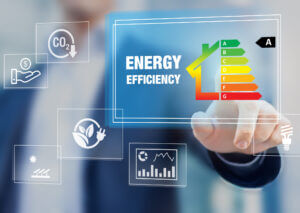What does LEED mean?
According to the U.S. Green Building Council (USGBC), LEED is the most widely used green building rating system in the world. LEED stands for Leadership in Energy and Environmental Design. It’s a recognized symbol of sustainability, set up as a benchmark for the design, construction, maintenance, and operation of green buildings. The most current standard is LEED v4.1. LEED certifications are available for all types of buildings including those for commercial and residential use. The standards can be applied to both new construction and major renovations of existing buildings. Types of commercial buildings that have achieved LEED certifications include office buildings, retail stores, hospitals, schools, hotels, data centers, and warehouses and distribution centers.
Why build to LEED standards?
Green buildings use fewer resources, reduce waste, have less negative impact on the environment, and maximize the health of tenants and occupants. Studies by Harvard University and SUNY Upstate Medical University released in 2016 found that occupants of green buildings were more productive, had higher sleep quality scores, and used fewer sick days than those occupying buildings without green certification.
Benefits of LEED certifications
Costs savings –
There are many cost savings associated with LEED certified buildings. They are more energy efficient, lowering heating and cooling costs. LEED certified buildings can use 30%-60% less energy than comparably sized non-LEED certified buildings. Another cost savings is in reduced water usage. High efficiency fixtures such as auto-flush toilets and hands free faucets reduce water consumption. Many LEED buildings harvest rainwater that can be used for landscape irrigation, ornamental ponds and fountains, and toilet flushing. LEED certified buildings generate less waste. Collecting recyclables keeps tons of trash from reaching landfills each year. Commercial LEED certified buildings may also report lower maintenance costs than non-certified buildings.
Increased property valuation –
Investment in green buildings and green retrofits makes properties more valuable. According to a SmartMarket report, many building owners report a 10% or higher increase in asset value.
Health benefits –
Health benefits include better indoor air quality and better long-term health of tenants and occupants. Using building materials and furnishings such as paints, sealants, adhesives, carpeting, and furniture with low levels of VOCs (volatile organic compounds) and formaldehyde translate to healthier indoor spaces. Green cleaning helps to reduce harmful chemical, biological, and particulate contaminants from the building.
Obtaining LEED certification
LEED certification is becoming one of the most sought after certifications in the building industry. Projects are scored in five areas: sustainable sites, water efficiency, energy and atmosphere, materials and resources, and indoor environmental quality. The USGBC allows projects to earn one of four designations. A project has a Certified rating if it has earned 40-49 points. A Silver level project has earned 50-59 points, and a Gold level rating means 60-79 points earned. The highest designation is Platinum, which translates to 80 or more points earned.




